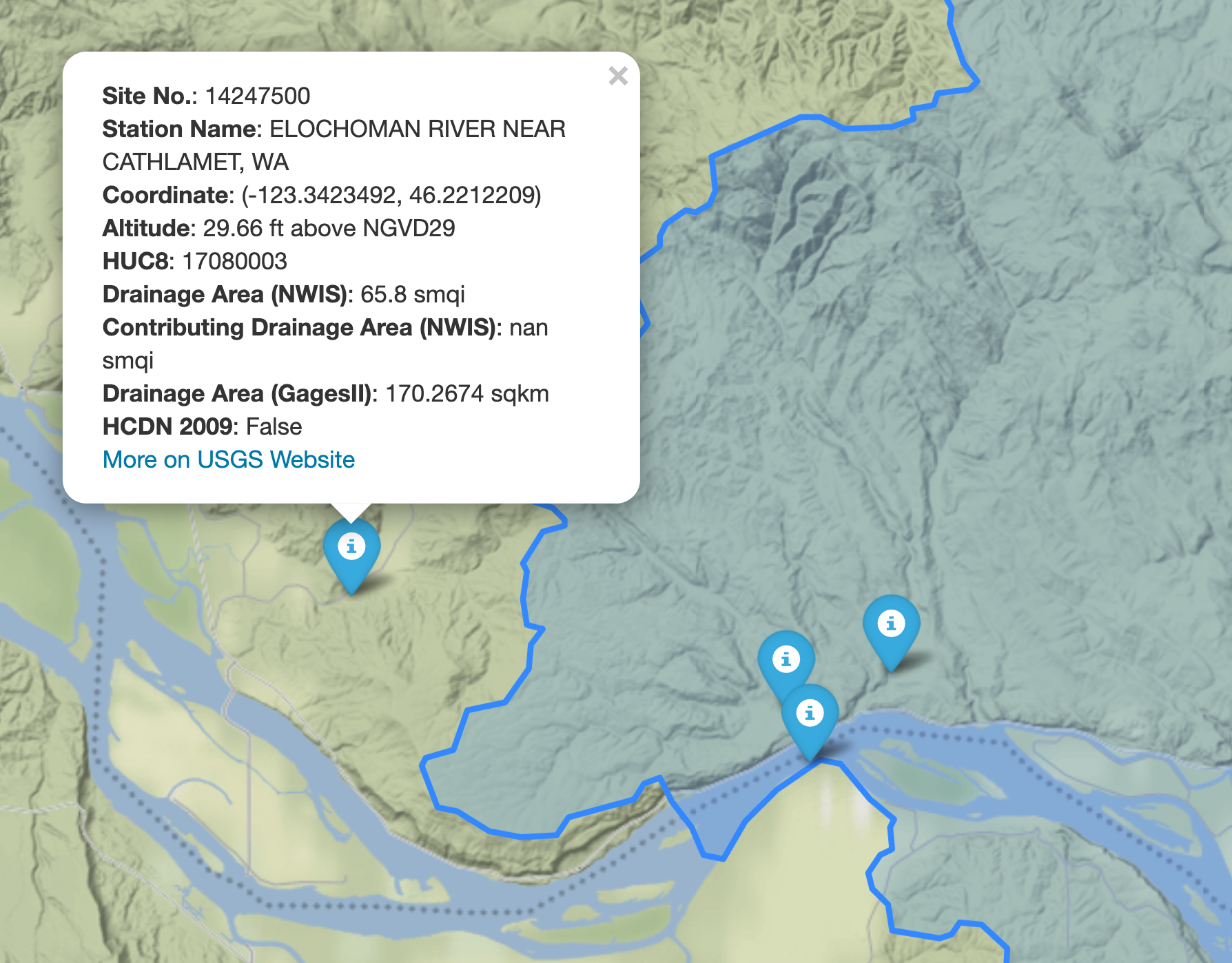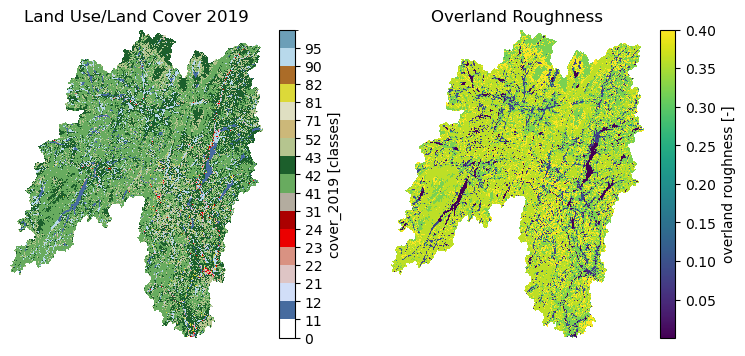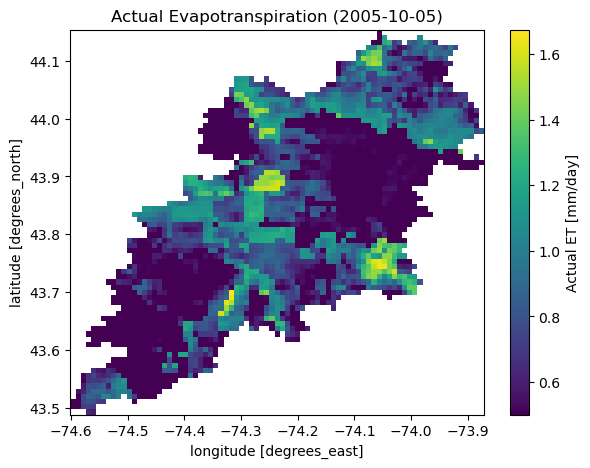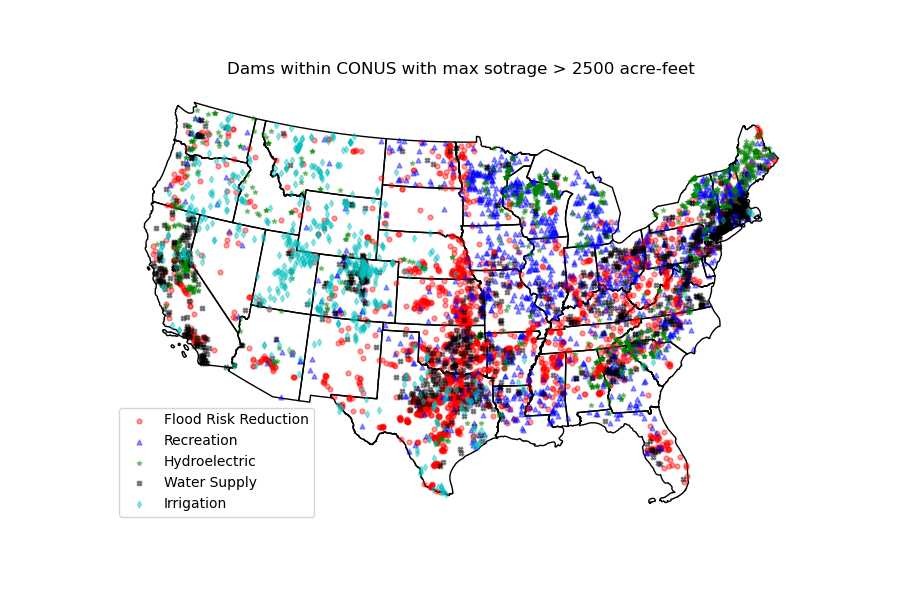A portal to access hydrology and climatology databases in Python
Project description
Package |
Description |
Status |
|---|---|---|
Access NWIS, NID, HCDN 2009, NLCD, and SSEBop databases |
||
Send queries to any ArcGIS RESTful-, WMS-, and WFS-based services |
||
Convert responses from PyGeoOGC’s supported web services to datasets |
||
Navigate and subset NHDPlus (MR and HR) using web services |
||
Access topographic data through National Map’s 3DEP web service |
||
Access Daymet for daily climate data both single pixel and gridded |
PyGeoHydro: A portal to hydrology and climatology data through Python










NOTE
This software stack was formerly named hydrodata. Since a R package with the same name already exists, we decided to renamed our project to pygeohydro. Installing hydrodata installs pygeohydro from now on.
Features
PyGeoHydro is part of a software stack for retrieving and processing hydrology and climatology datasets. This package gives access to some of the public web services that provide geospatial hydrology data. It has three main modules: pygeohydro, plot, and helpers.
The pygeohydro module can pull data from the following web services:
NWIS for daily mean streamflow observations,
NID for accessing the National Inventory of Dams in the US,
HCDN 2009 for identifying sites where human activity affects the natural flow of the watercourse,
NLCD 2016 for land cover/land use, imperviousness, and canopy data,
SSEBop for daily actual evapotranspiration, for both single pixel and gridded data.
Also, it has two other functions:
interactive_map: Interactive map for exploring NWIS stations within a bounding box.
cover_statistics: Categorical statistics of land use/land cover data.
The plot module includes two main functions:
signatures: Hydrologic signature graphs.
cover_legends: Official NLCD land cover legends for plotting a land cover dataset.
The helpers module includes:
nlcd_helper: A roughness coefficients lookup table for each land cover type which is useful for overland flow routing among other applications.
nwis_error: A dataframe for finding information about NWIS requests’ errors.
Moreover, requests for additional databases and functionalities can be submitted via issue tracker.
You can find some example notebooks here.
You can also try using PyGeoHydro without installing it on you system by clicking on the binder badge below the PyGeoHydro banner. A Jupyter notebook instance with the stack pre-installed will be launched in your web browser and you can start coding!
Please note that since this project is in early development stages, while the provided functionalities should be stable, changes in APIs are possible in new releases. But we appreciate it if you give this project a try and provide feedback. Contributions are most welcome.
Moreover, requests for additional functionalities can be submitted via issue tracker.
Installation
You can install PyGeoHydro using pip after installing libgdal on your system (for example, in Ubuntu run sudo apt install libgdal-dev):
$ pip install pygeohydroAlternatively, PyGeoHydro can be installed from the conda-forge repository using Conda:
$ conda install -c conda-forge pygeohydroQuick start
We can explore the available NWIS stations within a bounding box using interactive_map function. It returns an interactive map and by clicking on an station some of the most important properties of stations are shown.
import pygeohydro as gh
bbox = (-69.5, 45, -69, 45.5)
gh.interactive_map(bbox)
We can select all the stations within this boundary box that have daily mean streamflow data from 2000-01-01 to 2010-12-31:
from pygeohydro import NWIS
nwis = NWIS()
info_box = nwis.get_info(nwis.query_bybox(bbox))
dates = ("2000-01-01", "2010-12-31")
stations = info_box[
(info_box.begin_date <= dates[0]) & (info_box.end_date >= dates[1])
].site_no.tolist()Then, we can get the streamflow data in mm/day (by default the data are in cms) and plot them:
from pygeohydro import plot
qobs = nwis.get_streamflow(stations, dates, mmd=True)
plot.signatures(qobs)Moreover, we can get land use/land cove data using nlcd function, percentages of land cover types using cover_statistics, and actual ET with ssebopeta_bygeom:
from pynhd import NLDI
geometry = NLDI().get_basins("01031500").geometry[0]
lulc = gh.nlcd(
geometry, 100, years={"impervious": None, "cover": 2016, "canopy": None}
)
stats = gh.cover_statistics(lulc.cover)
eta = gh.ssebopeta_bygeom(geometry, dates=("2005-10-01", "2005-10-05"))

Additionally, we can pull all the US dams data using get_nid and get_nid_codes:
nid = gh.get_nid()
codes = gh.get_nid_codes()
Contributing
PyGeoHydro offers some limited analysis tools. It could be more useful for the watershed modeling community to integrate more data exploratory and analysis capabilities to the package. Additionally, adding support for more databases such as water quality, phenology, and water level, are very welcome. If you are interested please get in touch. You can find more information about contributing to PyGeoHydro at our Contributing webpage.
Credits
This package was created based on the audreyr/cookiecutter-pypackage project template.
Project details
Release history Release notifications | RSS feed
Download files
Download the file for your platform. If you're not sure which to choose, learn more about installing packages.
Source Distribution
Built Distribution
Hashes for pygeohydro-0.10.1-py2.py3-none-any.whl
| Algorithm | Hash digest | |
|---|---|---|
| SHA256 | 8b5df092da27657558ce608130f03590f87a4b7c3c3613a0656d3f126ab35c62 |
|
| MD5 | ae4d83ea56a3558283ca954e6dcbbadf |
|
| BLAKE2b-256 | 694420224e2295c56dd272a9b56302c7bfa974f7f4221b89dd9053d782de30b7 |

















